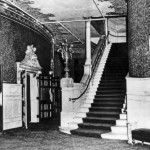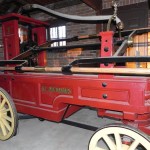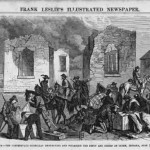The name Indianapolis–literally “Indiana City”—might suggest that the city’s history stretches back to the colonization of the state itself.
But our current capital and largest city was only founded in 1821, in response to the need for a centrally located administrative city.
Indiana’s two previous capitals, Vincennes and then Corydon, were both located in the southern half of the state, and with the expanding population, the Indiana Legislature called upon Alexander Ralston to survey the area of the future city.
Ralston, a Scot by birth, immigrated to the United States after the Revolutionary War. A trained engineer, Ralston had served as Pierre L’Enfant’s personal assistant during the planning of Washington D.C.
Adapting L’Enfant’s scheme for Washington, Ralston planned Indianapolis as a city block one square mile in area with a circle at its center, from which four diagonal roads extended radially outward.
While Ralston surveyed Marion County and planned Indianapolis between 1821 and 1827, his plan was not fully realized until 1850, when the city’s growth demanded intensive construction.
Ralston intended Indianapolis’s center circle to be the location of the Governor’s house; and the mansion was built in 1827. Then-Governor James B. Ray, however, refused to live in it, citing “a complete lack of privacy.” Any visitor to present-day Monument Circle can understand his rationale.
The house, designed by Ralston himself, was demolished in 1857 and replaced in 1901 by the Soldiers’ and Sailors’ Monument.





















